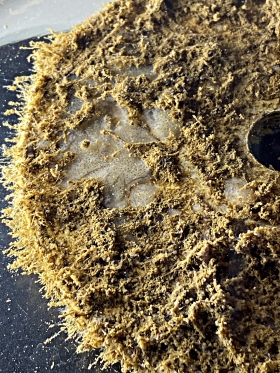Activity: Random Sampling
Random sampling is a method used in field biology and ecology to help define the population of organisms in a given area. It helps to ensure bias is removed when making estimates and analyses of populations. In these activities, you will attempt to observe and estimate the number of organisms on a disc. Following random sampling methods will help you make accurate estimates of the aquatic populations you observe.

Supplies
- A biofilm disc
- A petri dish to hold the disc
It is a good idea to hold or anchor the disc in place when you are identifying the number of different organisms present. Our method was to glue four pieces of tubing to the petri dish. The height of each piece is approximately the height of the side of the petri dish. - A stereomicroscope
- The sampling grid printed on transparency film (please note the number of grids)
- A random number table
Found in almost any basic statistics book. There are even computer programs that will generate a series of random numbers. - A captured image of a whole disc can be analyzed with free software, ImageJ, a popular application with educators
Steps
- Place the sampling grid in the petri dish.
- Place your disc in the petri dish and cover with water from the sampling site
Note: For very thick biofilms, you may need to reverse these two steps and place the grid on top of the disc - Use the random number table to select a grid to sample. To choose a starting point, point to a spot on the table with your finger.
- Going left to right, determine the next three-digit number.
- Determine if it is between 1 and 100, inclusive. In other words, is it one of the numbered sites on our sampling grid?
- If the number is within this range, locate this grid using the steromicroscope and record the number of different organisms attached to the disc (i.e., part of the biofilm).
Example: If the number was 018, we would locate grid number 18. - If the number is outside this range, go to step 3.
- Repeat steps 3-5 three times (i.e., take three random samples)
